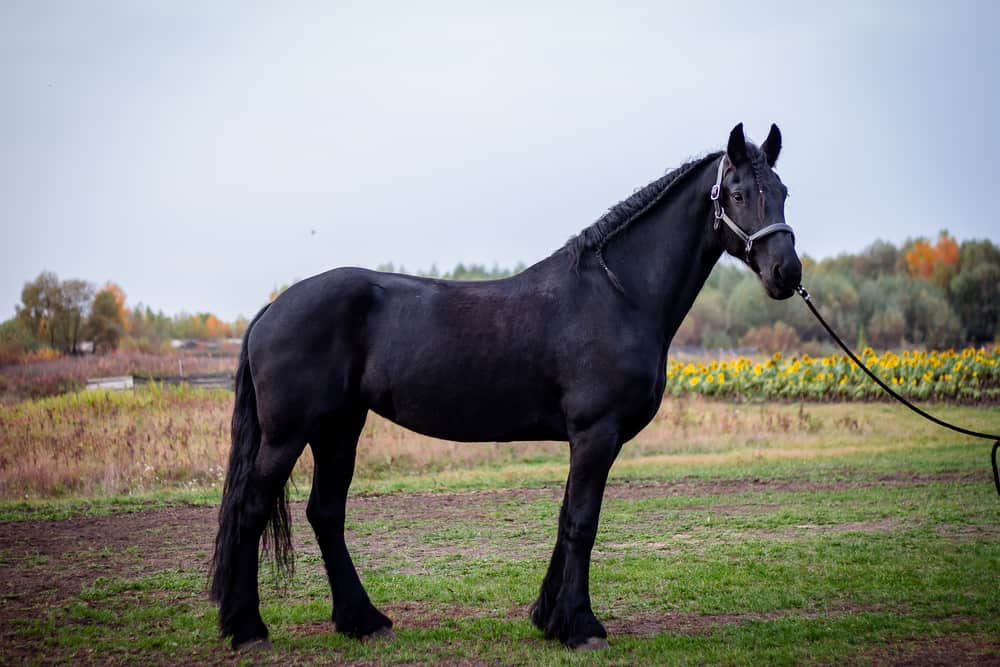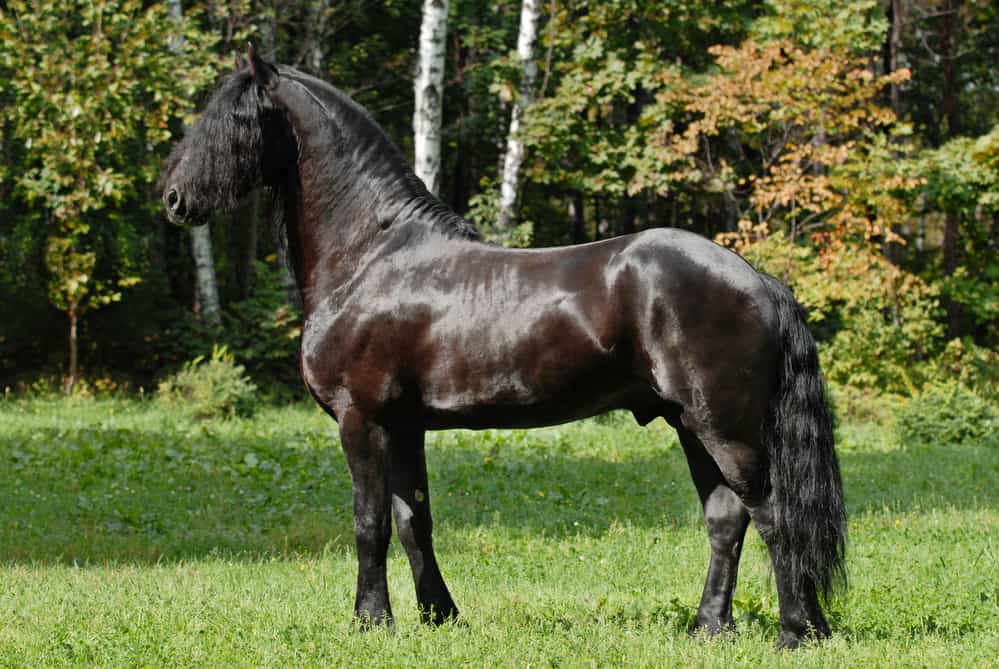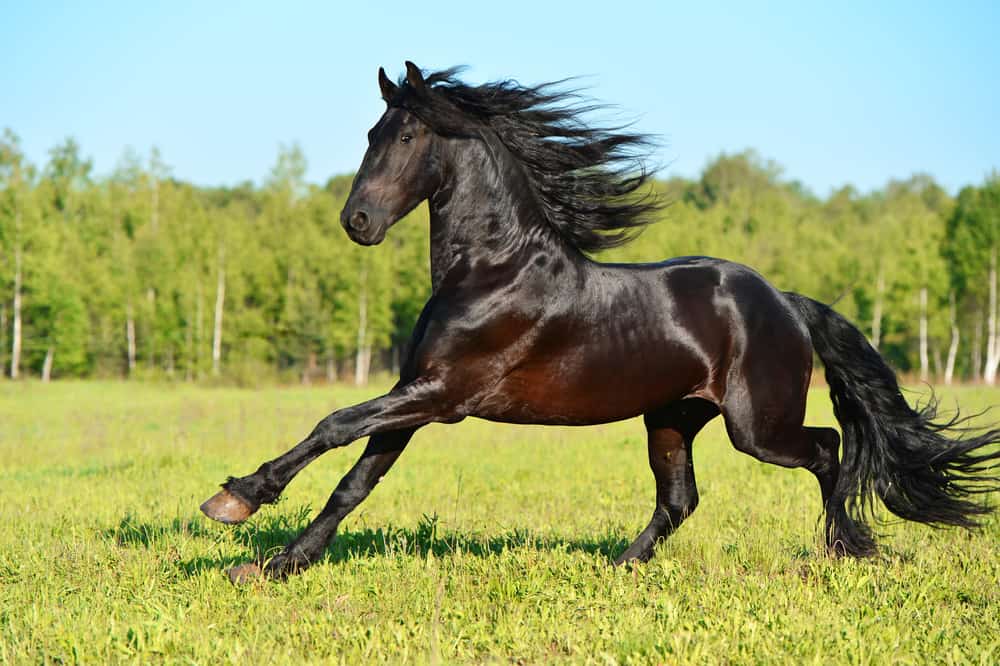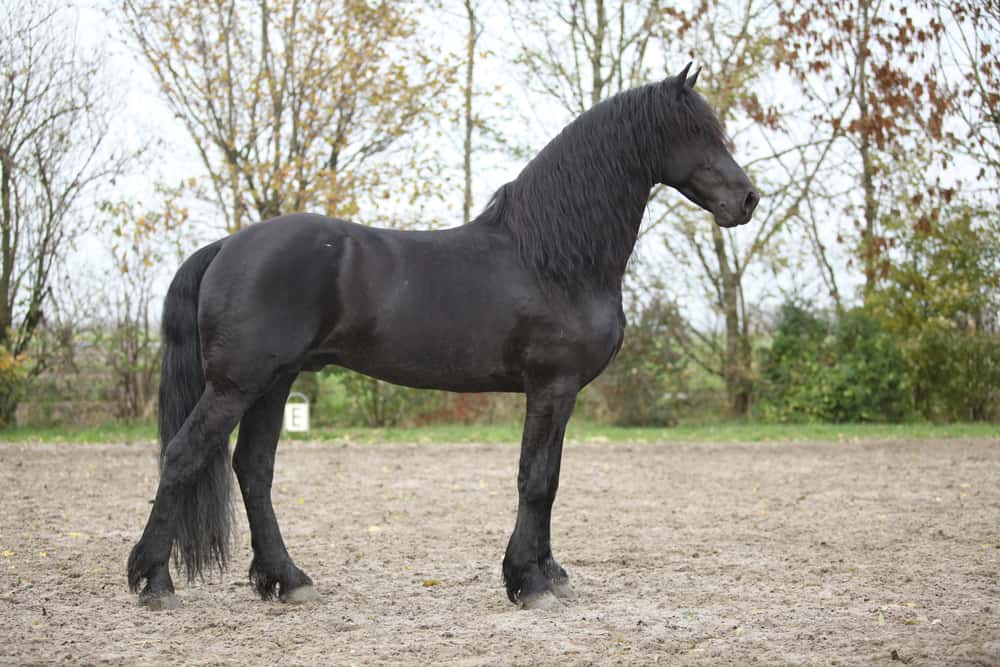The Friesian horse is a majestic horse breed widely known for its long mane and tail, robust build, and graceful presence. These beautiful animals can reach impressive sizes, with some reaching up to 17 hands high (68 inches or 173 cm).
While many Friesians are pretty large in stature, the average size of an adult Friesian horse is around 15.2 hands high (61 inches or 155 cm). This is slightly above the average size of a horse, which is 14-15 hands high (56-60 inches or 142-152 cm).

Regarding weight, Friesians can weigh anywhere from 900 – 1,200 pounds (405 – 540 kg). This is slightly higher than the average for horses, typically around 800-1,000 pounds (363-454 kg).
No matter what size a Friesian horse is, they are always considered beautiful and majestic animals. Whether you’re looking for a smaller riding companion or a giant showhorse, the Friesian breed is a great choice. With their unique look and powerful presence, they can turn heads wherever they go.
Table of Contents
How can you tell how big a horse is going to be?
Several things can be considered when it comes to predicting the size of a horse. The breed of the horse and its parents’ sizes are two of the most important factors to consider.

Some breeds are known for their more diminutive stature, while others are known for reaching impressive heights. Additionally, if either parent were more significant than average, the offspring would most likely be as well.
The horse’s conformation is another factor to consider when predicting size. Look at the proportions of the horse, such as its length and width, as well as muscling and bone structure.
Generally speaking, if the horse has a long body with thick bones and plenty of muscle mass, they are likely to be a large breed. On the other hand, a miniature horse has a shorter body with thinner bones and less muscling.
Hoof size is another factor to consider when predicting a horse’s size. Generally speaking, if the hooves are large in proportion to their body weight, it will most likely be a giant horse. Additionally, if the feet have plenty of growth rings, this indicates a large breed that will continue to grow.
Finally, looking at the horse’s diet and how much they are eating can be helpful. A horse getting ample nutrition and calories will likely reach its full potential. On the other hand, if a horse is not getting enough food or its diet lacks essential nutrients, this can inhibit growth and lead to smaller-than-average size.
While there is no guaranteed way to know how big a horse will be, considering all of these factors should give you a good idea of what to expect. With some knowledge and observation, you can better understand how significant your horse will be in the future.
Importance of Knowing the size of your Friesian Horse
The importance of knowing the size of your Friesian Horse cannot be overstated. Not only does the horse’s size impact its health, but it also determines how well it will fit into your space and lifestyle. It is essential to measure your area accurately and consult a professional to ensure that you select the proper size horse for your needs.

In addition to measuring your space, it is also essential to consider the horse’s weight. While a giant horse offers greater strength and power, it can also be more challenging if you do not have experience with larger animals. Knowing the weight of your Friesian Horse can help you determine if it is the right fit for you and your lifestyle.
Finally, it is essential to consider the temperament of the horse. Knowing its personality traits can help you decide if this type of horse would fit into your life and be best for you. Taking the time to learn more about Friesian Horses will help you find the right size and a horse with a temperament that works best for your lifestyle.
At what age does a horse reach full size?
A horse usually reaches its total size by the time it is four years old. However, some horses may take longer, up to 6 years of age. Many factors, including breed and gender, determine the size of the horse. Giant breeds, such as draft horses, tend to reach their maximum size younger than smaller breeds. Stallions also tend to get their full size earlier than mares.

The horse’s height is determined by the length of its bones and muscles, nutrition, and exercise levels. Horses that are not appropriately fed or need more exercise may never reach their full size even as they age. A healthy diet and regular exercise can help a horse get its full size in the shortest amount of time.
The overall health and condition of a horse also affect its growth. Horses that suffer from chronic illnesses or diseases can take longer to reach their maximum size than healthy horses. It is essential for owners to keep an eye on the growth of their horses as they age and to provide the proper care to ensure that the horse reaches its full size.
What are the stages of horse growth?
Horses have a unique life cycle, and the different stages of growth can be broken into three primary categories: foal, juvenile, and adult.

- The foal stage is the first few months of a horse’s life, beginning at birth and ending when it grows out of the foal size. During this stage, the foal will rapidly gain weight and height. Owners must provide a safe and healthy environment during this time, as the foal’s bones and muscles are still developing.
- The juvenile stage follows shortly after the foal stage and begins when the horse first starts growing out of its foal size. Depending on the breed, this stage can last anywhere from six months to two years. During this time, the horse will continue to grow and develop physically and mentally.
- The adult stage is the final phase of a horse’s growth and begins when it reaches its full size. The horse will be considered mature and ready to be ridden, trained, and used for various activities.


